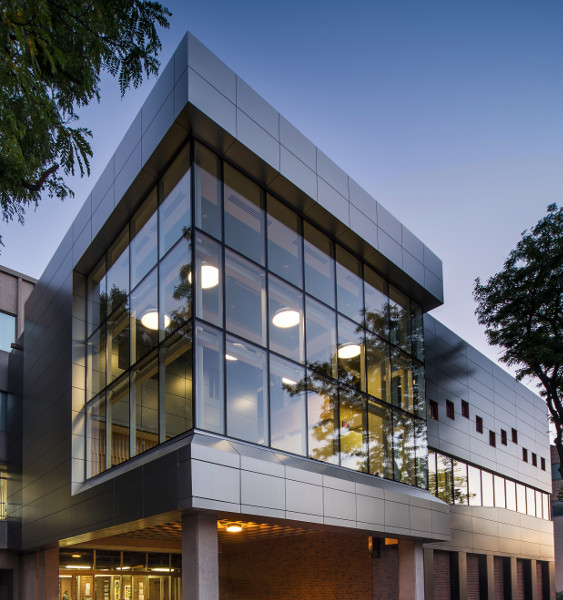The goal of this project is to find a common language around cultural vibrancy - and a way to measure it - so cities and towns can determine tangible goals, and plan more effectively for future growth.
By Jenny Gladish
Published May 15, 2014
We all live, work, and play in neighbourhoods. These are the places where significant interactions take place, where we form relationships with our community, our city, and in a sense, ourselves. They can be a point of pride or the aim of criticism, and sometimes both at once.
There are elements, both tangible and those harder to pin down, that help us make sense of our surroundings, and give us insight into who we are as citizens, collectively. It's no wonder so many studies and initiatives focus on how to make them better places that are safer, prettier, more inclusive, and easier to get around.
But when sidewalks have been widened and bike lanes added, what are the features of a neighbourhood that make citizens want to spend time there, and return often? What are those aspects that lead to a sense of attachment, belonging, and pride in a place?

Locke Street neighbourhood
Cobalt Connects is paying close attention to how culture plays out in the urban environment, and what it all means for cultural planning, a place-based approach to planning and development that has the power to enhance social equality, civic inclusion, economic development, and environmental responsibility.
The project is called Expressing Vibrancy, and along with two research labs at McMaster University, the City of Hamilton, and social enterprise the Centre for Community Study, its goal is to determine what makes a neighbourhood a culturally vibrant place.
Since the study began last summer, Ottawa Street, Locke Street South, Westdale Village, Concession Street, Waterdown Village, James Street North, Downtown Dundas, and Barton Village have become the testing grounds for observing culture in action.
With layers of community engagement built into the study, a number of themes have emerged, and the data has provided the first glimpse into how a city collectively defines its culture, as well as the type of neighbourhood features that matter to people.

James North neighbourhood
The goal is to find a common language around cultural vibrancy - and a way to measure it - so cities and towns can determine tangible goals, and plan more effectively for future growth.
It also seeks to create processes that allow for multiple definitions of what's "vibrant," acknowledging that cultural planning can do its job best if it encompasses a wide range of views and experiences reflected by its citizens.
Next, the study moves into McMaster University's LIVE Lab, and is looking for upwards of 500 citizens representative of the demographic fabric of Hamilton to make up its first audiences.
Within this one-of-a-kind research facility, the experience of moving through a neighbourhood will be replicated, the sights and sounds brought to life through its constellation sound system.
Volunteers' responses will be collected through a survey on a touchscreen tablet. Of the hundred participants in each session, ten will be hooked up to non-invasive sensors that will measure heart and breathing rates, natural brain activity, and skin responses.

McMaster University LIVE Lab (Image Credit: McMaster University)
This layer of the study is meant to take what was previously relegated to subjective data - "I like this neighbourhood. I really enjoy walking around and checking out the shops" - and add a scientific layer to it.
If specific neighbourhood footage causes the heart to quicken with excitement or breathing rates to alter due to nervousness, for instance, a far richer collection of data will result, and meaningful cultural planning can happen.
Cobalt Connects is working with Factor[e] Design Initiative to bring the results of this study to life online. The team there will be designing the information in a way that's interactive, and enables visitors to the Expressing Vibrancy website to customize the information according to the specific subset of data they want to access.
If someone wants to learn more about how young people or senior citizens feel about Hamilton's neighbourhoods, or want information about a specific neighbourhood, they'll be able to do so easily.
Watch the site evolve at www.expressingvibrancy.ca.
If you would like to participate in a LIVE Lab audience session, please contact us at 905-777-0787 or info@expressingvibrancy.ca.
This opportunity requires a commitment of about two hours, and participants will be compensated for the cost of parking, or HSR travel to and from campus. High school students participating in a session may count the time toward their required volunteer hours.
The LIVE Lab audience sessions:
Tuesday, May 20 - 10am
Wednesday, May 21 - 7pm
Thursday, May 22 - 1pm
Thursday, May 22 - 7pm
Friday, May 23 - 11am
Friday, May 23 - 4pm
Saturday, May 24 - 11am
By mikeonthemountain (registered) | Posted May 15, 2014 at 17:36:02
Very interesting! Just watched a TED talk on a similar/related subject a few days ago. It talks about making public spaces feel welcoming and make people want to stay a while. It focuses more on a design aspect than a cultural aspect, but I believe they are closely related and that each influences the other.
You must be logged in to comment.
There are no upcoming events right now.
Why not post one?